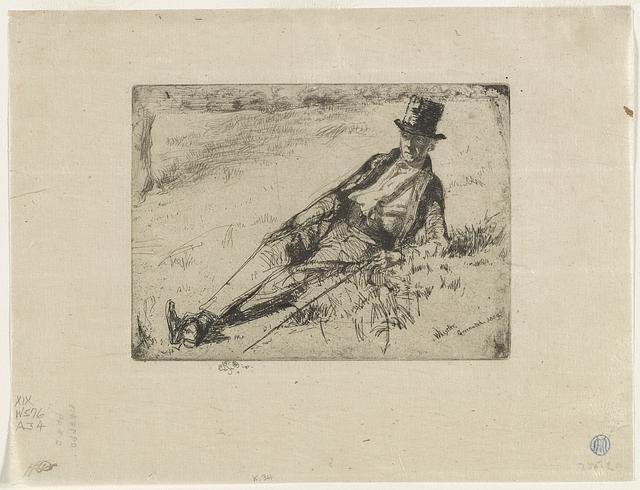By Rosemary Wright

Greenwich pensioner by Whistler 1859. Source: Library of Congress.
In 2011, the oldest Baby Boom workers reached the age of 65 — an age that more than 60 million Baby Boomers will reach by 2030. The issue of retirement weighs particularly on women, who are likely to outlive men and therefore have a longer period of retirement to finance.
In the study “Paying for Retirement: Sex Differences in Inclusion in Employer-Provided Retirement Plans,” I turned to the Baby Boomers to determine whether this new generation of women were well-prepared with retirement benefits. Is the retirement gap between Baby Boom men and women narrower than for older retirees? Are women still dependent on a husband’s retirement income for security in old age? To look at these differences, I examined a large sample obtained from the 2009 Current Population Survey for the differences between Baby Boom men and women’s inclusion in retirement plans, as well as predictors of inclusion in these plans.
The results of the new study showed a significantly higher percentage of women than men (68.4% vs. 65.2%) worked for an employer who offered retirement benefits. A slightly higher percentage of men than women (92.4% vs. 91.1%) were included in their employers’ retirement programs. Overall, significant positive predictors of working for an employer with a retirement plan were sex (women more likely than men), employment in a core industry or in a primary occupational sector, educational attainment, and government worker status (government workers more likely than non-government workers). On the other hand, significant negative predictors were minority status (minorities less likely than non-minorities), age (older workers less likely than younger workers), having children younger than age 18 (those with children under the age of 18 less likely than those with no children under 18), and immigrant status (immigrants less likely than non-immigrants).
Minority status and educational level were the only two predictors for which there was a significant sex difference. Minority women were less likely than minority men to work for an employer with retirement benefits. As educational attainment increased, men were more likely than women to work for an employer providing retirement benefits.
Significant positive predictors of a worker actually being included in an employer’s retirement program were age (older workers more likely to be included than younger workers), employment in a core industry or in a primary occupational sector, educational attainment, marriage (married workers more likely than non-married workers), and government worker status. Minority status was the only significant negative predictor of inclusion (minority workers less likely than non-minority workers to be included).
There was only one variable with a significant difference between men and women: government employment. Female public employees were more likely than male public employees to be included in their employers’ retirement programs.
Two major good-news stories emerge from this study. First, a much larger group of workers is included in an employer’s retirement plan in this study than received pension benefits in earlier studies. This reflects the expansion of the types and availability of retirement benefits available to workers today, and is a good sign for retirement security as Baby Boom workers begin to retire. Second, there was only one predictor for which the likelihood of being included in a retirement


